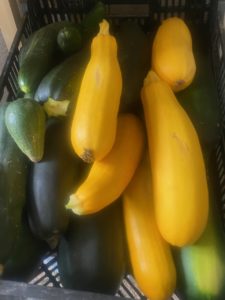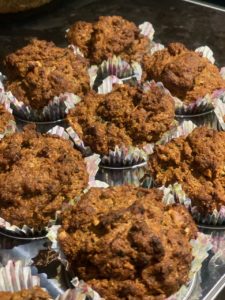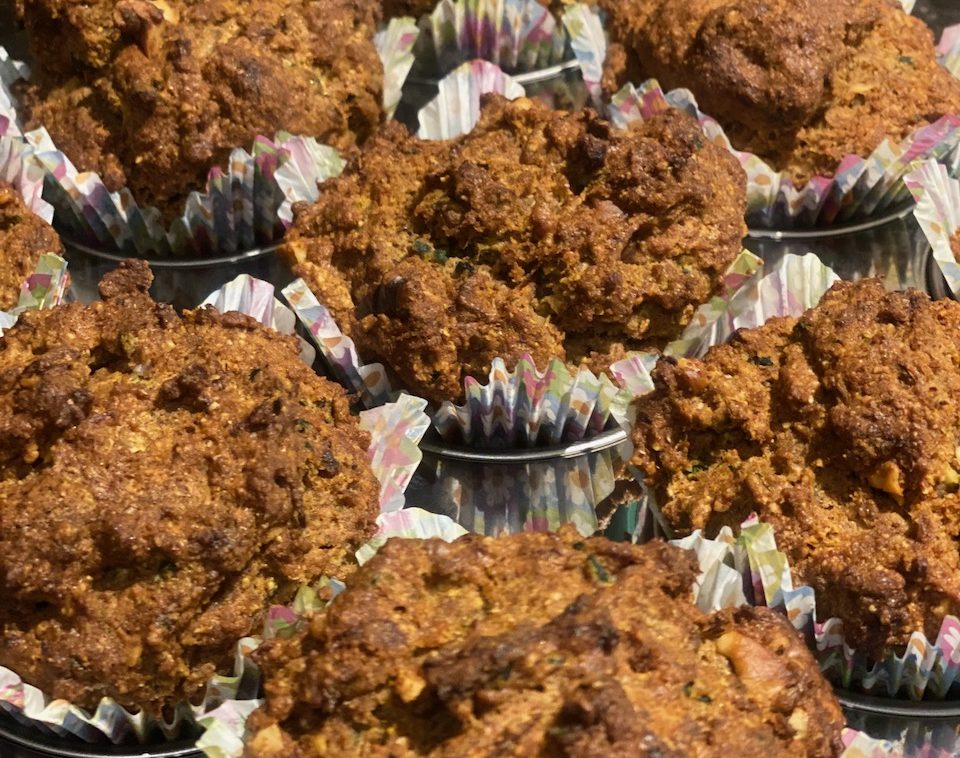Part of the pumpkin family, Cucurbita pepo is native to the Americas since 1492. Explorers brought C. Pepo to Europe and garden breeders in Milan “discovered’ the variety (Cucurbita moschata) around 1850. The name ” zucchini” to be coined later in Tuscany.
No matter the name or the origin, the beloved summer squash is a plant of of great production and culinary treats. Summer squash small offshoot greens are a healthy part of a hypoglycemic diet considering the fibre and carbohydrate content. The fruit is high in carotenoids, phenolic acids, flavonoids and a source of potassium and sodium. It is 96% percent water and has 1.2g fibre and 0.6g protein per 100g of fruit.

Zucchini is tasty sliced, grilled at medium temperature until soft and flexible, then drizzled with olive oil and sprinkled with sea salt. It is beautiful sliced and tossed with olive oil, Italian spices and sea salt, then baked in the oven at 325F for half an hour. It is lovely when spiralized, coated with olive oil and chopped fresh basil and a little sea salt then pan cooked at medium high heat until it clarifies. Below, I have a recipe for gluten, dairy and sugar free zucchini muffins, a great way to start your late summer day.
Ways to eat zucchini
- grilled
- baked
- pan fried
- muffins
Recipe inspiration for baked zucchini muffins

Whisk together until well blended:
1 cup all purpose gluten free flour (Bob’s Red Mill’s)
1 cup almond flour
1/2 cup coconut flour
1/2 cup arrowroot flour
1 tsp xanthum gum
1 tsp salt
1 tsp baking powder
1 TBSP baking soda
1 TBSP cinnamon
Stir in:
3 cups grated fresh zucchini
1 1/2 cups chopped walnuts
Whisk in separate bowl:
3 eggs
1 cup mashed ripe banana
2 TBSP ground flax seed
1 1/2 tsp vanilla
1 1/2c oil
Then put the wet with the dry mix and stir until consistent texture.
Pour into large muffin paper cups. Fills 12 generously.
Convect bake at 350F for 50 minutes, or until toothpick comes clean when test. Refrigerate or freeze what isn’t eaten in 24 hours.
References:
de Castro, N. T., de Alencar, E. R., Zandonadi, R. P., Han, H., Raposo, A., Ariza-Montes, A., Araya-Castillo, L., & Botelho, R. (2021). Influence of Cooking Method on the Nutritional Quality of Organic and Conventional Brazilian Vegetables: A Study on Sodium, Potassium, and Carotenoids. Foods (Basel, Switzerland), 10(8), 1782. https://doi.org/10.3390/foods10081782
Kopczyńska, K., Kazimierczak, R., Średnicka-Tober, D., Barański, M., Wyszyński, Z., Kucińska, K., Perzanowska, A., Szacki, P., Rembiałkowska, E., & Hallmann, E. (2020). The Profile of Selected Antioxidants in Two Courgette Varieties from Organic and Conventional Production. Antioxidants (Basel, Switzerland), 9(5), 404. https://doi.org/10.3390/antiox9050404
Lust, T. A., & Paris, H. S. (2016). Italian horticultural and culinary records of summer squash (Cucurbita pepo, Cucurbitaceae) and emergence of the zucchini in 19th-century Milan. Annals of botany, 118(1), 53–69. https://doi.org/10.1093/aob/mcw080
Paris, H. S., Daunay, M. C., Pitrat, M., & Janick, J. (2006). First known image of Cucurbita in Europe, 1503-1508. Annals of botany, 98(1), 41–47. https://doi.org/10.1093/aob/mcl082
Renna, M., Signore, A., Paradiso, V. M., & Santamaria, P. (2018). Faba Greens, Globe Artichoke’s Offshoots, Crenate Broomrape and Summer Squash Greens: Unconventional Vegetables of Puglia (Southern Italy) With Good Quality Traits. Frontiers in plant science, 9, 378. https://doi.org/10.3389/fpls.2018.00378




